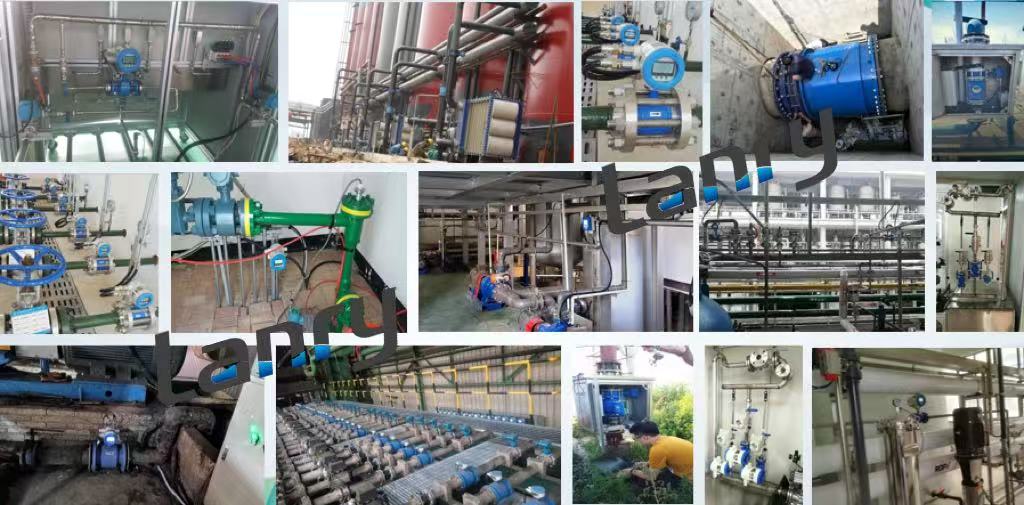1. Rubber Linings
1.1 Natural Rubber
Natural rubber is a popular choice for pipeline linings in applications where the measured medium is non - corrosive and has a relatively low temperature. It offers excellent abrasion resistance, which makes it suitable for fluids that may contain suspended particles, such as some types of wastewater or slurries with soft solids. For example, in a sewage treatment plant, the influent and primary treatment processes often involve the flow of wastewater with various debris. The natural rubber - lined pipelines can effectively withstand the friction caused by these particles while being compatible with the electromagnetic flowmeter. The natural rubber lining provides a smooth inner surface, reducing the flow resistance and ensuring accurate flow measurement by the electromagnetic flowmeter.
1.2 Synthetic Rubber (e.g., Neoprene)
Synthetic rubbers like neoprene have enhanced chemical resistance compared to natural rubber. Neoprene - lined pipelines are suitable for measuring fluids that are slightly corrosive, such as certain weak acids or alkalis within a specific concentration range. In industrial processes where there are chemical cleaning agents being transported in pipelines, neoprene - lined pipes can be used in conjunction with electromagnetic flowmeters. The neoprene lining not only protects the pipeline from chemical attack but also maintains the integrity of the electromagnetic field used for flow measurement, enabling accurate determination of the flow rate of these chemically - reactive fluids.
2. Fluoropolymer Linings
2.1 PTFE (Polytetrafluoroethylene)
PTFE is renowned for its outstanding chemical resistance, being able to withstand a wide range of highly corrosive chemicals, including strong acids, bases, and oxidizing agents. PTFE - lined pipelines are commonly used in the chemical industry, pharmaceutical manufacturing, and semiconductor production. In a chemical plant where aggressive chemicals like concentrated sulfuric acid or hydrofluoric acid are being transferred, an electromagnetic flowmeter can be installed on a PTFE - lined pipeline. The PTFE lining ensures that the pipeline is not damaged by the corrosive medium, and its non - conductive and chemically stable properties do not interfere with the electromagnetic measurement principle. This allows for precise flow measurement even in extremely harsh chemical environments.
2.2 FEP (Fluorinated Ethylene Propylene)
FEP is another fluoropolymer lining material. It has similar chemical resistance to PTFE but with some advantages in terms of processability and transparency. FEP - lined pipelines are often used in applications where visual inspection of the fluid flow is required in addition to accurate flow measurement. For example, in some laboratory - scale chemical reactions or in the production of high - purity liquids in the pharmaceutical industry, FEP - lined pipelines can be paired with electromagnetic flowmeters. The transparency of FEP enables operators to observe the flow state of the fluid, while the electromagnetic flowmeter provides accurate flow rate data.
3. Ceramic Linings
Ceramic - lined pipelines are highly suitable for applications that require high - temperature resistance and excellent wear resistance. Ceramics have a high melting point and can maintain their mechanical and chemical properties at elevated temperatures. In industries such as power generation, where hot ash - containing gases or high - temperature slurries are present, ceramic - lined pipelines can be used with electromagnetic flowmeters. The ceramic lining protects the pipeline from the erosive effect of the high - velocity particles in the fluid, and the electromagnetic flowmeter can accurately measure the flow rate of these high - temperature fluids. Although ceramics are brittle materials, proper installation and design of the pipeline system can ensure their long - term reliable operation in combination with electromagnetic flowmeters.
In conclusion, electromagnetic flowmeters can be effectively used with pipelines lined with rubber (both natural and synthetic), fluoropolymers (PTFE and FEP), and ceramics. The choice of the lining material depends on the specific properties of the measured medium, such as its chemical composition, temperature, and abrasiveness, to ensure accurate and reliable flow measurement.

Post time: Feb-18-2025

